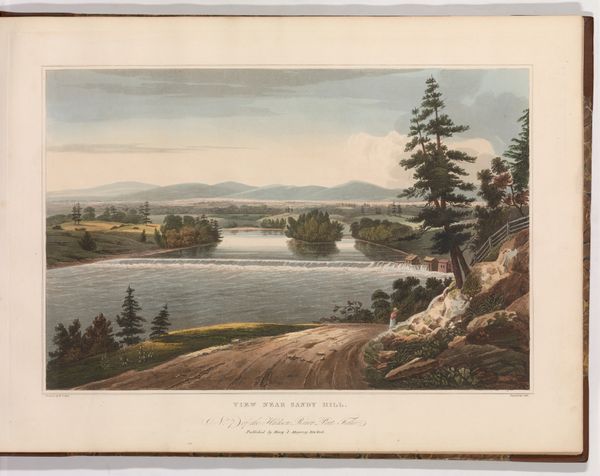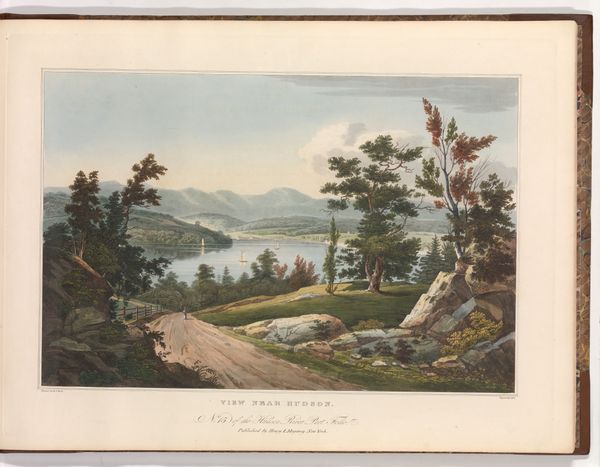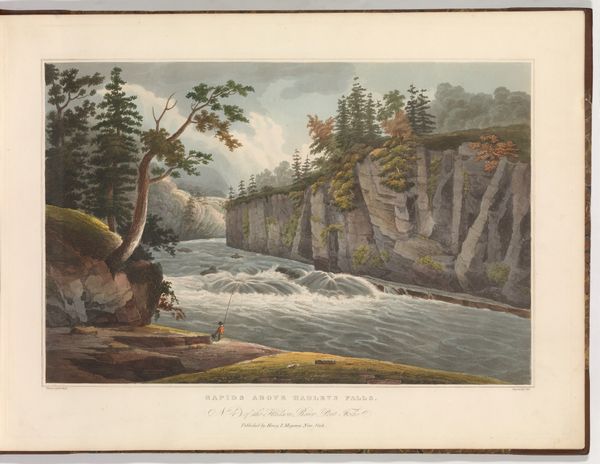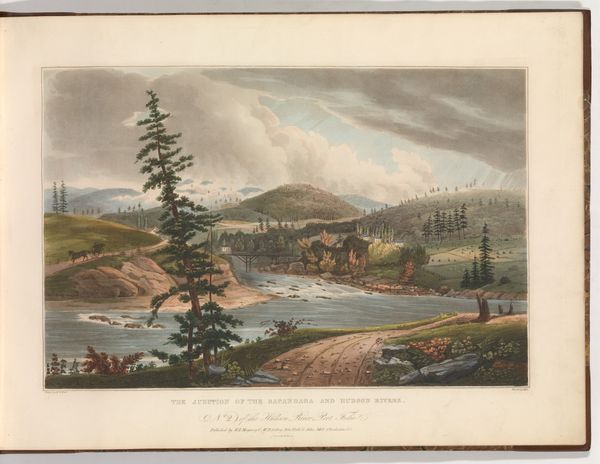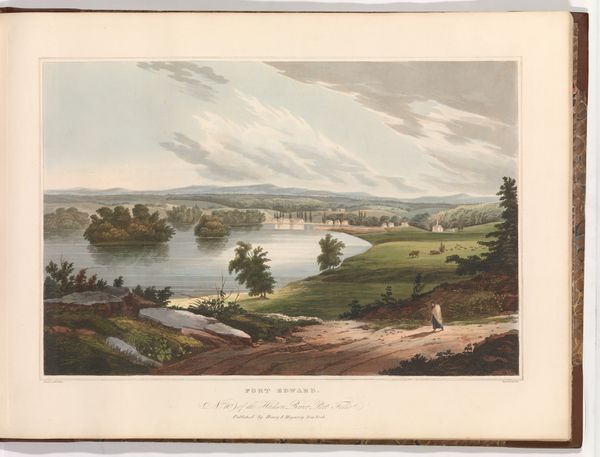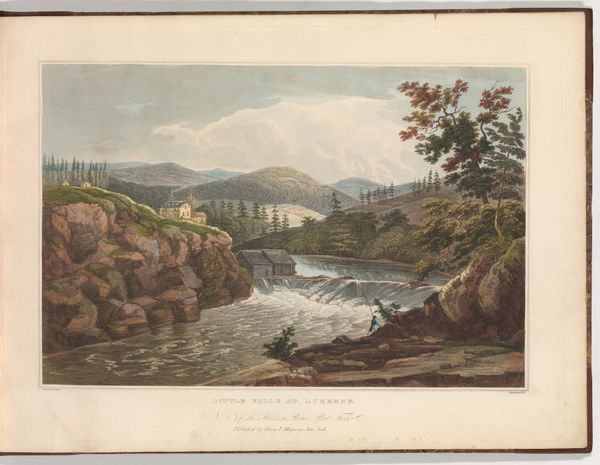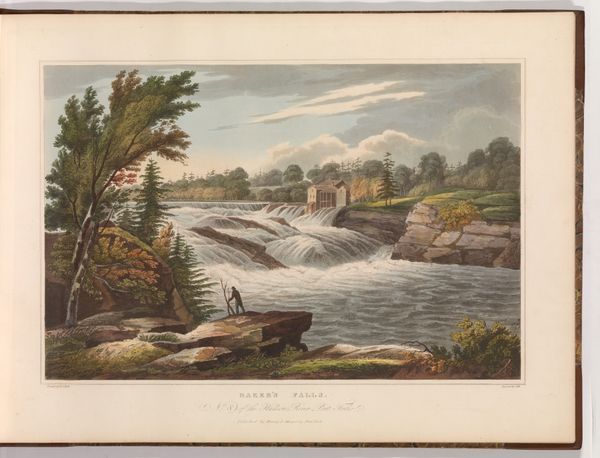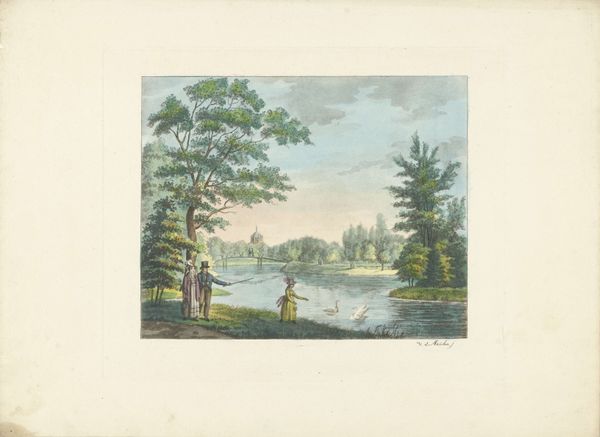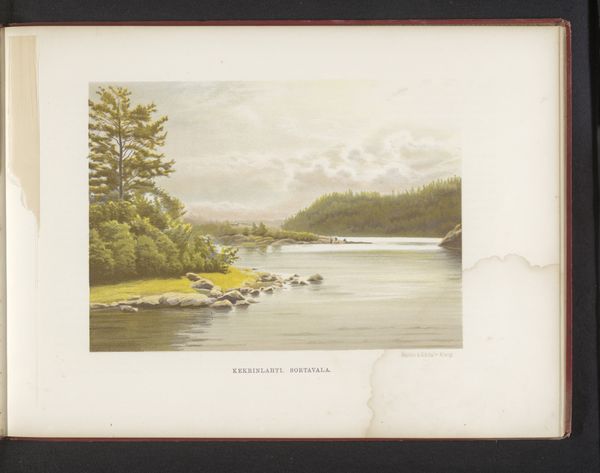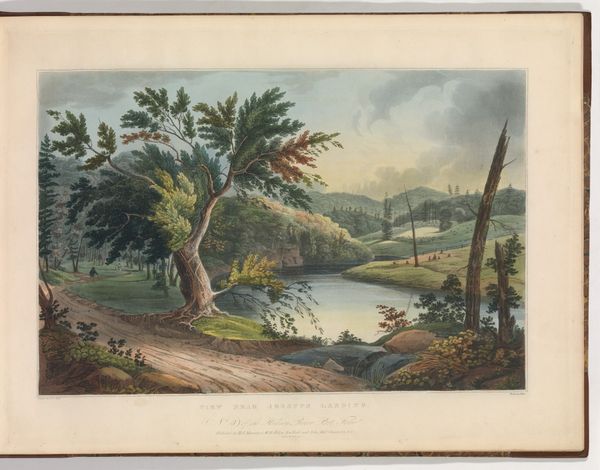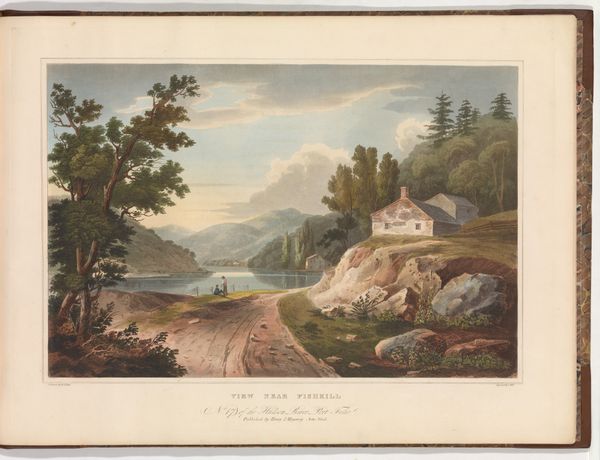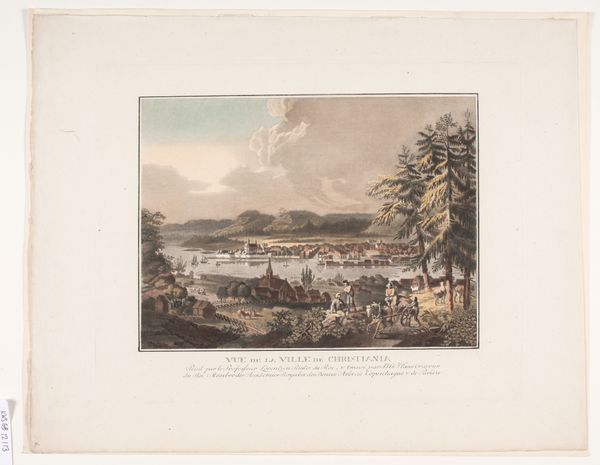
View Near Fort Miller (No. 10 (later changed to No. 9) of The Hudson River Portfolio) 1822
0:00
0:00
Dimensions: Image: 14 1/16 x 20 3/16 in. (35.7 x 51.3 cm) Sheet: 19 x 24 1/2 in. (48.3 x 62.2 cm)
Copyright: Public Domain
Editor: So this is "View Near Fort Miller" by John Hill, made around 1822. It's a print, an etching, on paper. It feels very peaceful, almost… idealized. How do you interpret this work, seeing as it's part of The Hudson River Portfolio? Curator: Well, beyond its serene aesthetic, it’s crucial to consider the socio-political context of its creation. The Hudson River School, and thus this image, played a pivotal role in shaping a distinctly American identity in the early 19th century. Landscape art became a tool for nation-building. Editor: Nation-building? Curator: Exactly! As America expanded westward, images like this promoted the idea of a bountiful, beautiful land ripe for development. This print isn't just a pretty picture; it subtly encourages westward expansion and reinforces the narrative of manifest destiny. Notice the careful composition, seemingly untouched, yet implicitly inviting. Editor: So, even the portrayal of untouched wilderness served a political purpose? Curator: Absolutely. And consider how these images circulated – as part of a portfolio, accessible to an elite audience who were also likely involved in shaping policy and westward expansion. It’s a form of visual propaganda, subtly influencing perceptions and justifying political actions. The public role of art here is to legitimise claims to territory. Editor: That's… darker than I initially perceived. I had seen it as simply celebrating natural beauty, but you've completely changed my understanding of what was really going on at the time. Thank you for that perspective. Curator: My pleasure. Remember, art often reflects the values and ambitions of the society that produces it, for better or for worse.
Comments
No comments
Be the first to comment and join the conversation on the ultimate creative platform.
